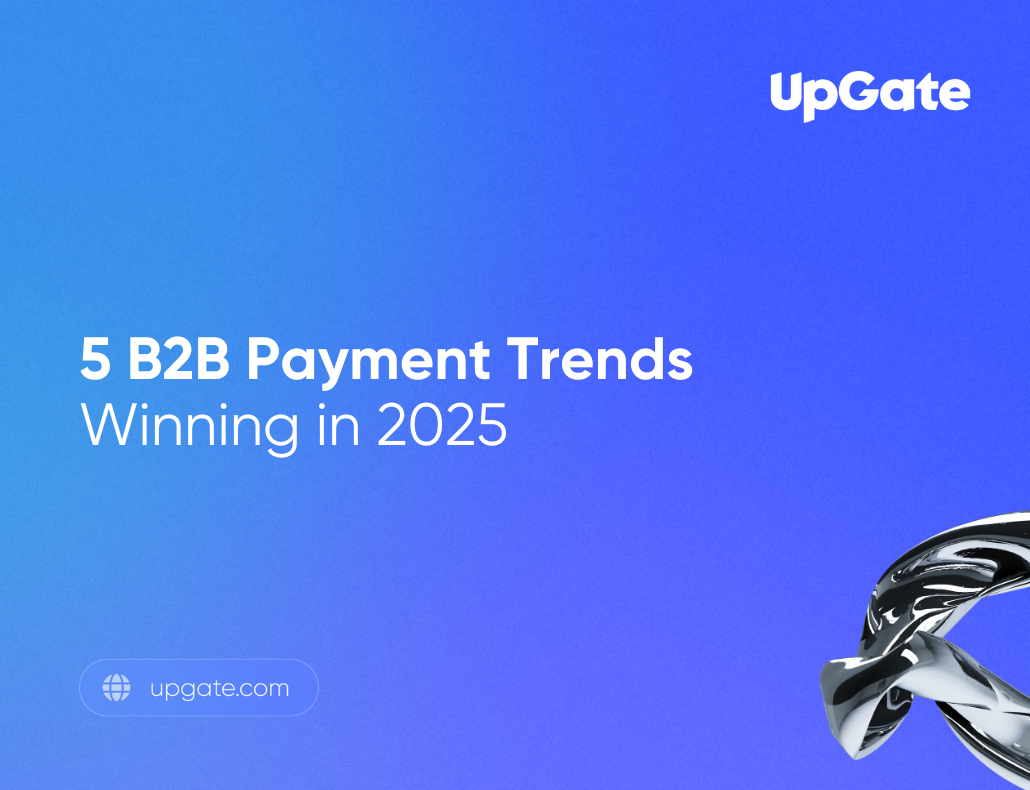5 B2B Payment Trends Winning in 2025 (So Far)
As we pass the halfway mark of 2025, one thing is clear: B2B payments are evolving at a faster pace.
Key Takeaways
Payment orchestration is proving essential to improving approval rates..
Embedded finance is becoming a competitive advantage across platforms.
Real-time payments are moving from pilot to production in global B2B transactions.
Local payment methods are powering global reach.
AI is no longer optional in securing and automating payment operations.
Halfway Through 2025: What’s Driving the B2B Payment Revolution
As we pass the halfway mark of 2025, one thing is clear: B2B payments are evolving at a faster pace. In just a few months, we've seen massive adoption of smarter infrastructures, better user experiences, and increased pressure to deliver seamless and secure payment operations.
This year is not just about forecasts, it’s about execution. Let’s dive into the five trends that are already transforming the B2B payment ecosystem in 2025.
1. Payment orchestration is delivering real results
More businesses are turning to orchestration platforms to manage complexity, increase approval rates, and scale globally. By intelligently routing transactions through the most efficient payment providers, and automatically retrying failed ones, companies are reducing payment failures and protecting revenue.
Early 2025 data shows that companies using advanced orchestration are seeing 10–20% increases in approval rates, particularly in cross-border or high-risk transactions. And with cascading logic, failed payments can often be recovered instantly, no manual intervention needed.
It’s not just infrastructure. It’s insurance for your revenue stream.
➡ All You Need to Know About Payment Orchestration.
2. Embedded finance is redefining the user experience
Embedded finance isn’t new, but in 2025, it’s become a key differentiator for platforms. Businesses are embedding B2B payment flows directly into their software via APIs, removing friction for users and creating new revenue streams.
From procurement tools to invoicing platforms, the goal is clear: eliminate context-switching and offer financial services right where users are already working.
According to Bain & Company, the embedded finance market could reach $7 trillion in volume by 2030, and we’re already seeing that growth accelerate in B2B sectors this year.
➡ UpGate as the Key to Embedded Finance Mastery
3. Real-time payments are picking up serious momentum
In 2025, businesses aren’t just exploring real-time payments, they’re actively adopting them. Faster settlement means better liquidity, faster vendor payouts, and lower operational costs.
This year alone, FedNow in the U.S. has gained hundreds of financial institution participants, while adoption of PIX (Brazil) and UPI (India) continues to dominate volume in their respective markets. In Europe, SEPA Instant usage is rising as more banks enable instant capabilities.
Speed and transparency are now expected, not optional.
➡ Instant Payments Revolution: What You Need to Know About the New EU Regulations
4. Localization is unlocking cross-border growth
A major takeaway from the first half of 2025? Offering local payment methods is essential for conversion, especially in B2B.
We’ve seen a sharp rise in demand for methods like Furikomi (振込) in Japan, PIX in Brazil, OXXO Pay in Mexico, and many more in different countries, as businesses expand internationally. These options aren’t just “local favorites”, they’re trusted standards.
59% of customers will abandon a transaction if their preferred payment method is unavailable. localization has become a vital part of any go-to-market strategy.
➡ How Payment Orchestration Optimizes Cross-Border Transactions
5. AI is driving real value in fraud prevention and automation
AI isn’t just a future bet, it’s already delivering results in payments. In 2025, businesses are using AI-powered tools to detect fraud, automate reconciliation, and accelerate approvals.
Advanced fraud systems are now monitoring transactions in real-time, flagging anomalies before they escalate. Given that fraud-related losses could hit $46.1 billion globally by 2027 (Juniper Research), this has become mission-critical.
At the same time, automation is cutting hours of manual work in areas like invoice processing and cash application, freeing finance teams to focus on strategy, not spreadsheets.
➡ AI in Action: Exploring AI Trends in Payment Orchestration Landscape
What’s Next: The Outlook for B2B Payments in 2025 and Beyond
The pace of innovation in B2B payments isn’t slowing down. If anything, the first half of 2025 has proven how quickly businesses are willing to adopt tools that make payments smarter, safer, and more scalable.
Looking ahead, we expect to see even broader adoption of orchestration and AI, faster integration of local payment methods, and new standards around real-time and embedded finance. The winners will be those who build flexible, intelligent infrastructure that adapts to the market in real time.
At UpGate, we help businesses optimize their payments through orchestration, smart routing, and global coverage. Want to see how? Book a demo!